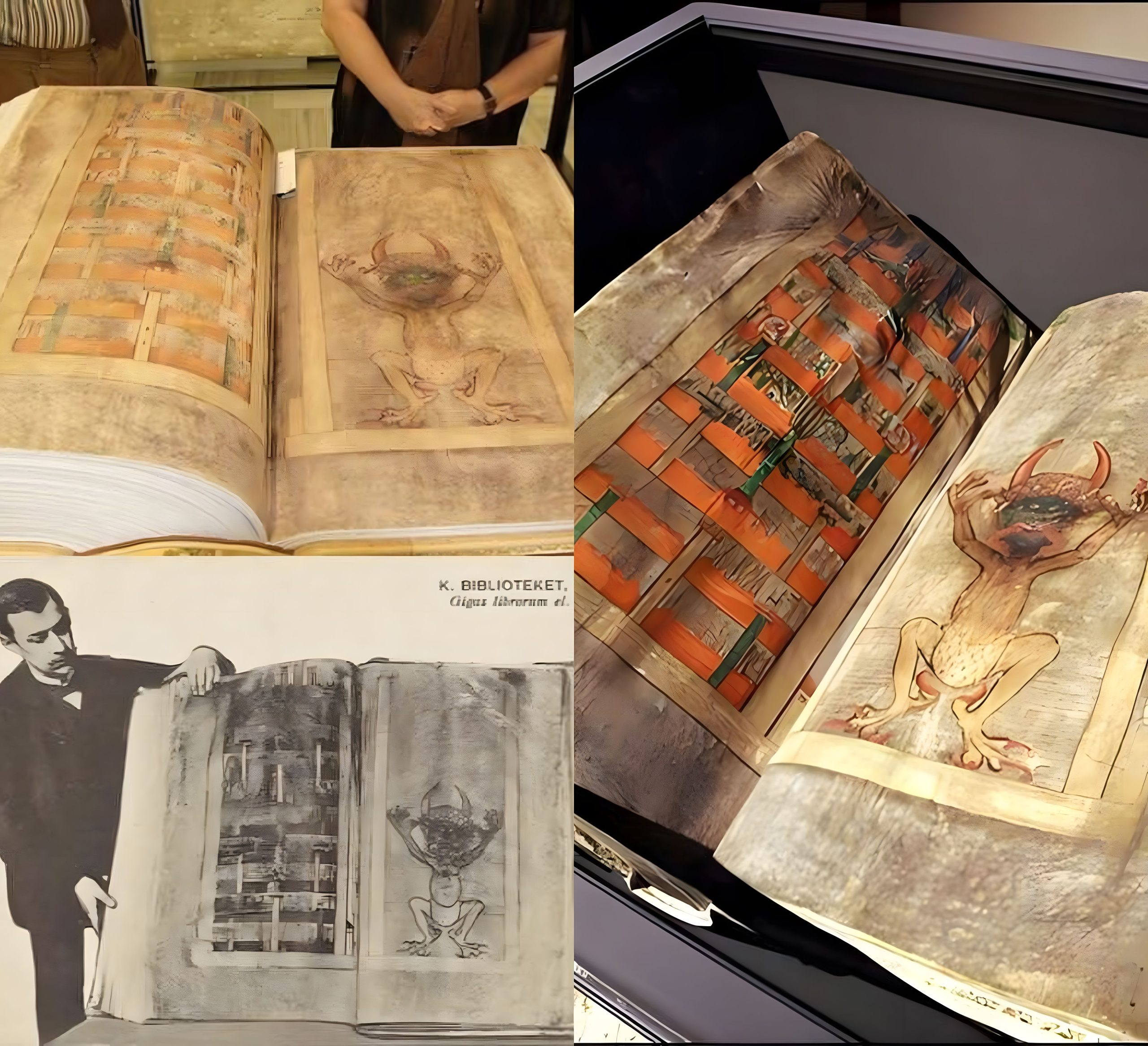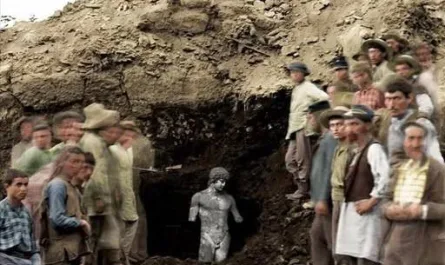The Codex Gigas, also known as the Devil’s Bible, is famous for three reasons: it is the largest illuminated medieval manuscript in the world, it is so perfectly and uniformly written that the feat appears inhumane, and it contains a large full-page portrait of the Devil.
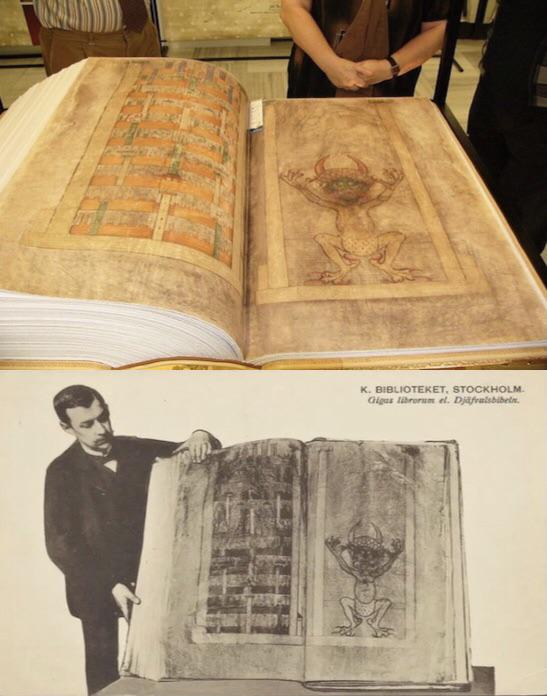
Written sometimes between 1204 and 1230, the book is 92 cm tall, 50cm wide, 22 cm thick, and weighs around 79 kg. It initially contained 320 leaves of vellum reputedly made from the skins of 160 donkeys (at two pages per donkey, the skins would have covered an area of 142.6 square meters) though twelve leaves were removed at some unknown date for some unknown reason. Very large illuminated bibles were a typical feature of monastic book production, but even within this group, the page-size of the Codex Gigas is exceptional.

The manuscript is written using the carolingian minuscule, a popular and highly legible medieval script. It contains many detailed illuminations, mostly decorated letters and geometrical or plant-based forms, except for a squirrel perched on top of an initial, a portrait of Josephus, and the infamous caricature-like portrait of the devil. There are also two images representing Heaven and Earth complete with the sun, moon and stars, plus a planet made of sea with no landmasses.
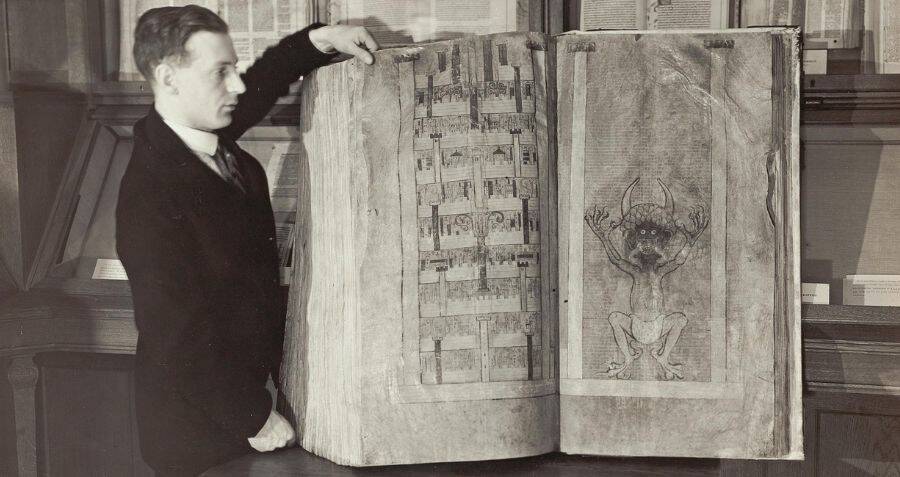
The Codex is bound in one volume, with thick wooden boards covered in white leather decorated with blind stamps, none of which has been seen elsewhere. Both boards have metal fittings – in the four corners and in the center – each one masterfully decorated and containing a raised button on which the book was supposed to rest. There are two more metal fittings on the back, with a hole that may have been used to chain the Codex to a piece of furniture (as if someone could just walk away with it). The binding was damaged in a fire, and in 1819 it was re-bound by an artisan in Stockholm who received 78 riksdaler for materials and labor, with which, for comparison, he could have bought two cows.
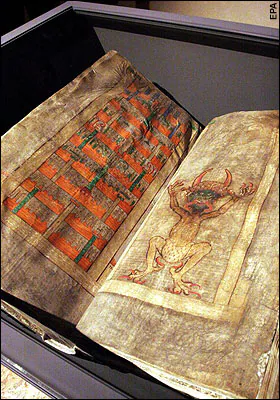
Inside it, we can read the entire Latin Bible, Isidore of Seville’s Encyclopaedia Etymologia, Josephus’ Antiquities of the Jews, Cosmas of Prague’s Chronicle of Bohemia, plus numerous writings describing magic formulae, exorcism rituals, and a calendar.
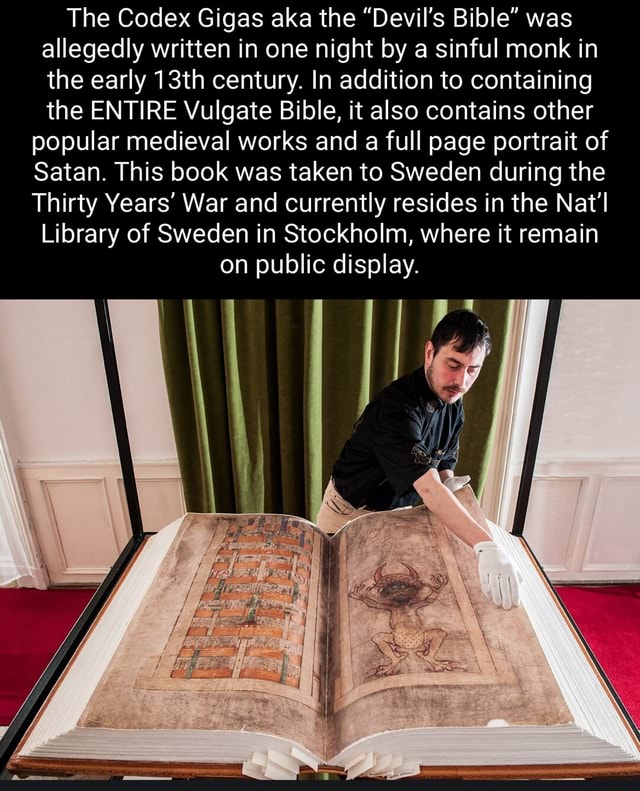
A National Geographic documentary included interviews with specialists in the areas of writing and forensic analysis, who concluded that it was written by a single scribe, and that the writing alone would have required a minimum of 5 years of full-time, single-minded labor, plus 20 more for the decorations. The scribe would have had to rule each page before forming the letters, after which 100 lines a day would have been a reasonable goal.
What makes the Codex all the more intriguing is the nature of the writing, since there are no signs of age, disease, mood, or a natural evolution in style. In fact, its length, size, detail, and perfection are of such extraordinary magnitude that a legend regarding its origins was recorded in the Middle Ages, stating that it was written by a monk who broke his monastic vows and was sentenced to be walled up alive. In order to avoid this harsh penalty he promised to create a book that would include all human knowledge, and that it would be ready in one night. When he realized that he could not complete the task alone, he asked the fallen angel Lucifer to help him finish it, in exchange for the monks’ soul. The devil accepted the deal, and the monk added his portrait in gratitude for his help.
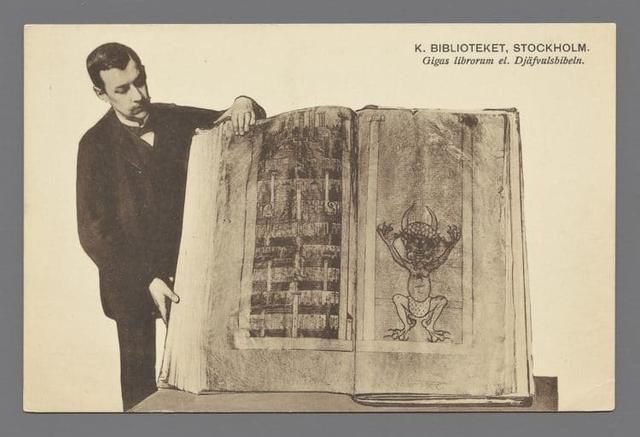
This picture of the devil is interesting in itself, since he is wearing a white loincloth with small comma-shaped red dashes, which have been interpreted as the tails of ermine furs, a common symbol of sovereignty. He also has a forked tongue, an image used in the Bible to denote a dishonest human being. Could the drawing actually be some form of political commentary?
Here is a quick timeline of the manuscript’s eventful life:
1204 to1230 the Codex is probably written at the Podlažice Monastery in the Kingdom of Bohemia – now part of the Czech Republic
1295-Podlažice pledges it to the nearby monastery of Sedlec, who sells it to the Benedictine Order of Břevno Monastery.
1594-Emperor Rudolf II takes the Codex “on loan”, and puts it in his castle in Prague.
1648-Prague is sacked by the Swedish army, and the manuscript ends up in Queen Christina’s library inside the Castle Tre Kronor.
1697- The castle burns down, and 18,000 books plus 5,700 manuscripts end up in flames. The Devil’s Bible survives because someone throws it out the window, injuring a bystander, and the book binding is seriously damaged.
1768- The manuscript is installed into the newly-built Stockholm Palace.
1819 – The book is re-bound.
1878- The Codex is moved by sleight to a new library building in the Humlegården park .
2007 –The manuscript is loaned out to Prague, where it is shown in the national library.
2018 – It becomes a permanent display inside the Treasury Room of the Royal Library in Stockholm. If you can’t go to Stockholm, you can have a look on the Library’s website, where the entire work is viewable in digitized form.
